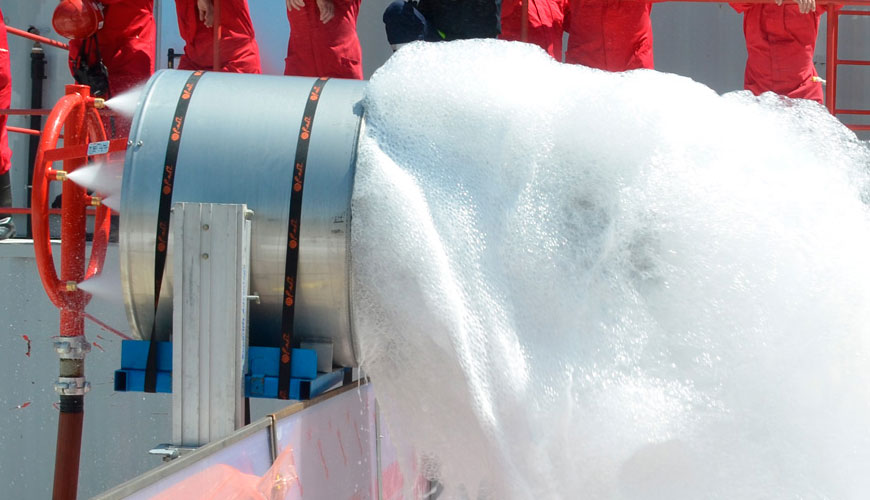

EUROLAB laboratory provides testing and compliance services within the scope of NFPA 11 standard. NFPA 11 covers the design, installation, operation, testing and maintenance of low, medium and high expansion and compressed air foam systems for fire protection. It is not the purpose of this standard to specify where foam protection is required.

This standard is intended for use and guidance by those responsible for designing, installing, testing, inspecting, approving, listing, operating or maintaining fixed, semi-stationary or portable low, medium and high expansion and compressed air foam. Fire suppression systems for internal or external hazards. Nothing in this standard is intended to restrict new technologies or alternative arrangements unless the level of security required by the standard is reduced.
Compressed Air Foam (CAF) is a homogeneous foam material produced by a combination of water, foam concentrate, and air or nitrogen under pressure. A method of producing compressed air foam recognized in this standard using a mixing chamber to combine air or nitrogen, water and foam concentrate in the correct proportions under pressure. The resulting compressed air foam is conveyed to the protected hazard via pipes or hoses.
Compressed Air Foam System (CAFS), a system that uses compressed air foam discharge devices or hoses connected to a piping system through which foam is conveyed from a mixing chamber. The discharge of the CAFS begins with the automatic actuation of a sensing system or manual actuation that opens the valves that allow the compressed air foam created in the mixing chamber to flow through a piping system and be discharged over the area served by the discharge devices or hoses.
This standard will provide requirements for the correct use of compressed air foam system components. All components will be listed according to their intended use. Where ingredient lists are not available, ingredients will be approved.
The water supply to compressed air foam systems should be allowed to be hard or soft, fresh or salty, but of such a quality that no adverse effects on foam formation or foam stability will occur. No corrosion inhibitors, emulsion breaking chemicals or other additives shall be included without prior consultation with the foam concentrate supplier.
The water supply will be sufficient to feed all discharge devices and compressed air foam hoses that will be allowed to be used simultaneously for the specified period. This amount of water will include not only the volume required for the compressed air foam lance, but also the water that will be allowed to be used in other firefighting operations in addition to normal plant requirements.
The compressed air foam stream contains a mix of both hydraulic and pneumatic elements that must be considered together in system design to maintain the foam bubble structure until the foam is emptied in the event of a hazard.
System flow calculations should be made using a calculation method for compressed air foam, within the limitations of the manufacturer's design manual. Compressed air foam pipe lengths and configurations of fittings and nozzles shall conform to the manufacturer's listed limitations.
EUROLAB provides industry-specific hazards safety measures to protect companies from fire hazards under the Test Standard for Low, Medium and High Expansion Foam. Do not hesitate to contact our organization, EUROLAB, for all your material testing and service requests, including NFPA 11.
To get an appointment, to get more detailed information or to request an evaluation, you can ask us to fill in our form and reach you.